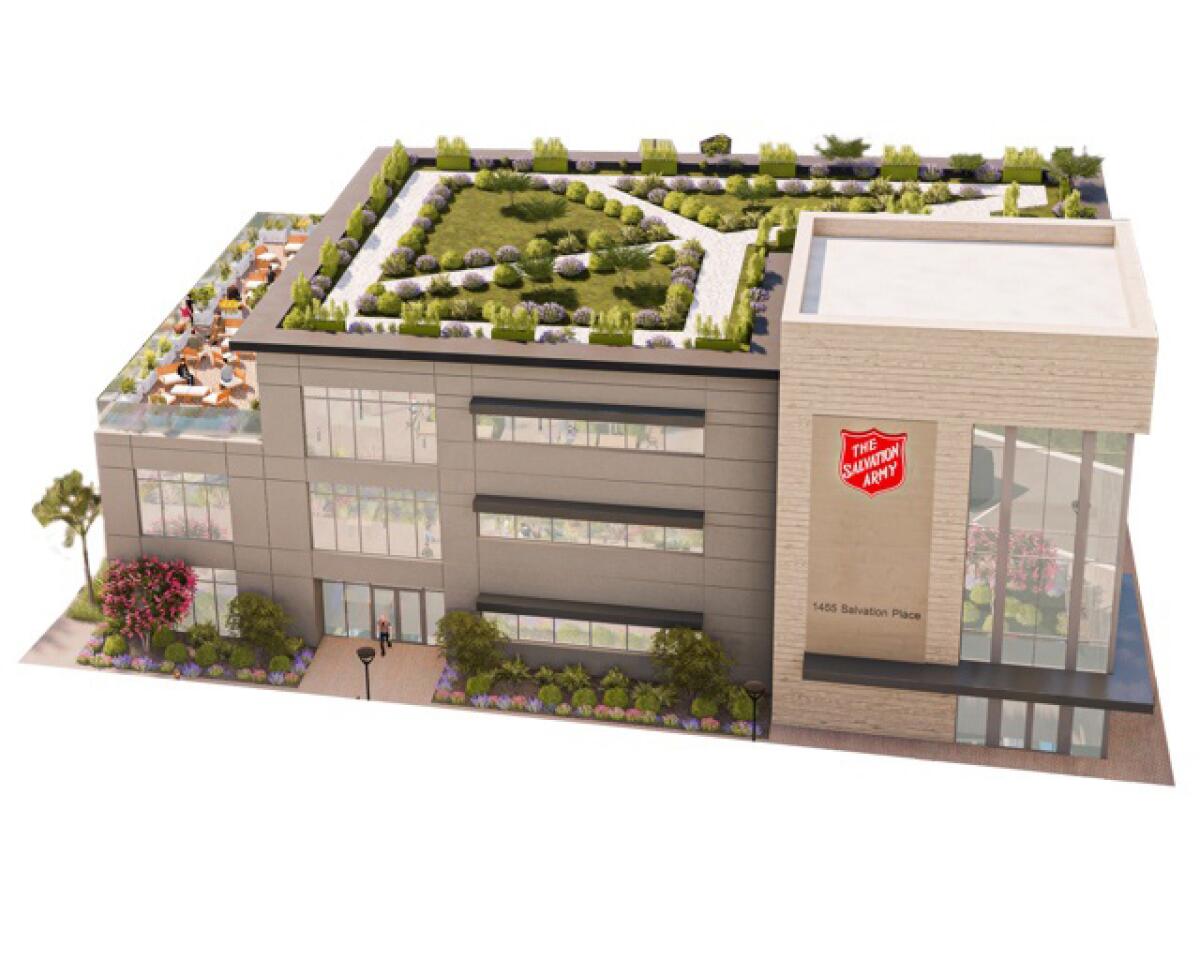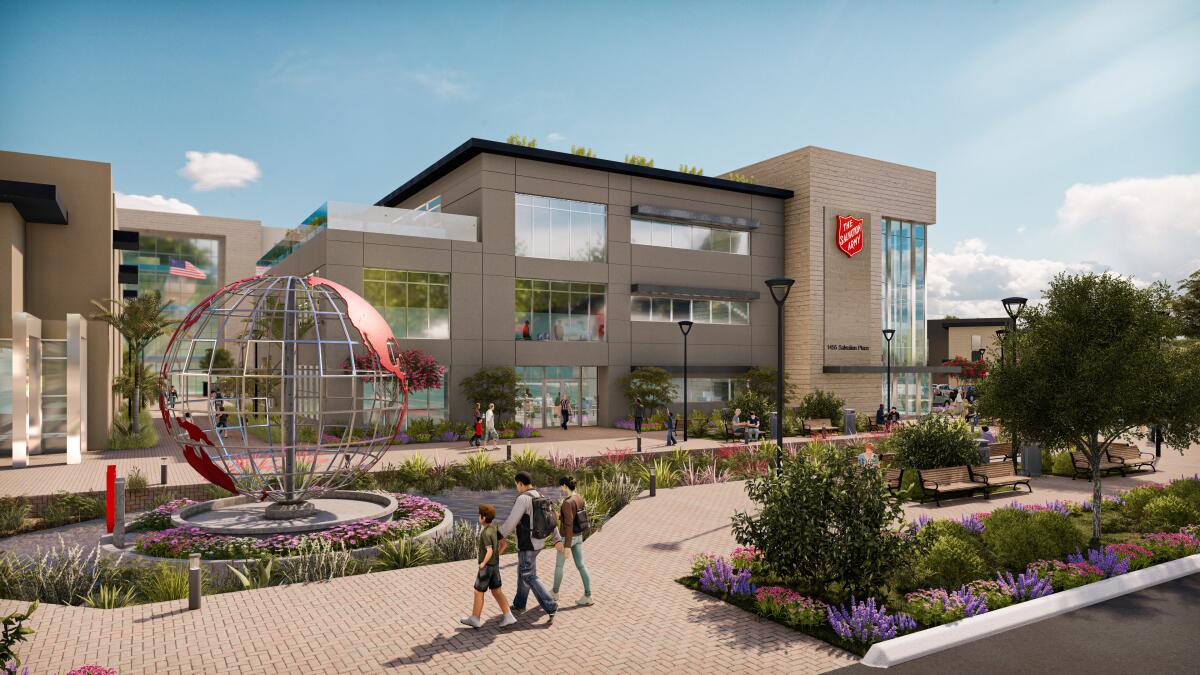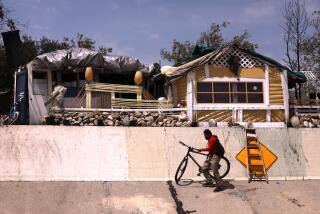Salvation Army’s Center of Hope aims to help homeless people ‘reintegrate’ into community

- Share via
For the last few years in Orange County, many cities have sought to deal with the spiraling homelessness crisis by opening emergency shelters.
The effort largely took place in response to a lawsuit launched by homeless advocates after the removal of a tent city near Angel Stadium. The decision in that lawsuit forced the county to reckon with the issue.
However, advocates contend that the shelters are not a solution to homelessness but a short-term fix to getting people off the street.
The Salvation Army is looking to do something different with its Center of Hope in Anaheim. Rather than only temporarily housing homeless people, the organization is also looking to provide a host of services on one campus to reintegrate homeless people into their communities.
“The Center of Hope will serve as the hub to an innovative strategy to move the homeless from shelter, to permanent housing, to work, rehabilitation and sobriety, really with the aim of fully reintegrating them into society,” said Ben Hurst, Salvation Army director of operations in Orange County. “That to us is the uniqueness of the space. It’s not just a shelter and it’s not just homeless housing. It’s a pathway for reintegration.”
Once complete, the Center of Hope campus will include the emergency shelter, a 72-bed supportive housing facility, a wellness center, a 175-bed drug and rehabilitation center, and a research and innovation center, the organization’s first of its kind.
Some elements of the center are already operational. The emergency shelter opened in 2019 as Anaheim rushed to fulfill the obligations of a legal settlement related to the tent city lawsuit requiring it to provide 325 beds. The rehabilitation center is also open.
Hurst said the center is four years in the making. The other facilities have been in the design and planning stages for the last couple of years. Once it’s up and running, the center will be able to serve up to 575 people at a time.
Hurst said the center will be guided by the organization’s Homeless Throughput System, which seeks to get people off the streets and “reintegrated” into the community. Hurst said the goal is for people to spend about three to six months going through the center’s facilities.
The system is organized around a classic baseball diamond, where first base is the emergency shelter. Homeless residents are expected to spend about 60 to 90 days in the shelter before being placed in supportive housing, which is second base. During this time, the residents will be enrolled in a “life transformation program,” which is third base. The program focuses on achieving sobriety and work training.
“That’s the reason capacity is capped at 575 — it’s not supposed to be a gigantic project housing, it’s a triage and rehabilitation center,” Hurst said.

Hurst said the center will primarily serve Anaheim’s homeless population, but it is a countywide resource. For instance, 16 permanent supportive housing units are sponsored by the county.
According to the last Point in Time count in 2019, there were almost 7,000 homeless people in Orange County. In Anaheim, there were 1,202 homeless people — 694 of whom were unsheltered.
Hurst said that between 30% to 50% of homeless people are chronically disabled and need housing assistance because they cannot hold a full-time job or take care of themselves financially. Hurst said the Center of Hope is seeking to help the rest of the homeless population that doesn’t qualify for federally subsidized housing.
“We feel like in Orange County, we’re in a race against time,” Hurst said. “There’s a real sense of urgency that we’ve got an opportunity to get ahead of the wave that could be coming. That’s why we focus our attention on a throughput system, knowing that there is no local government that has the ability to house all the homeless.”
More to Read
Sign up for Essential California
The most important California stories and recommendations in your inbox every morning.
You may occasionally receive promotional content from the Los Angeles Times.











